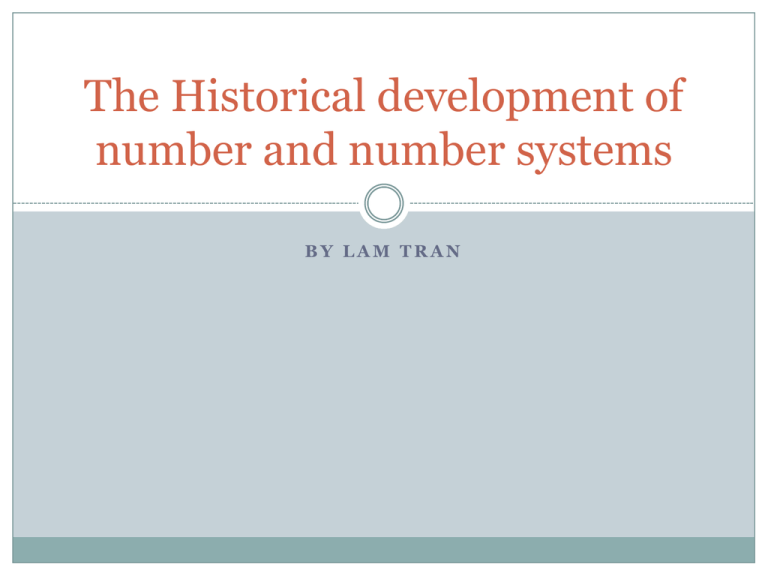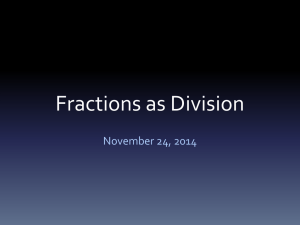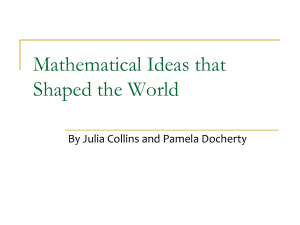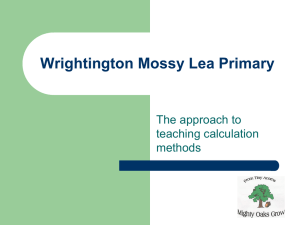Numbers
advertisement

The Historical development of number and number systems BY LAM TRAN Egyptians (3000-1000 B.C.) Two numeration systems Improved tally system “Hieroglyphics” Their systems were based on groupings of 10 Add and Double Used their numeration system for measurement Babylonians (2000-200B.C.) Number system based on grouping of 60 Position System Writings was on clay tablets Biggest Problem was spacing between the position Towards the end they used dot to separate their numbers Maya (300 B.C.) & Romans Similar to Babylonians Similar to the Egyptian No problems with system Larger numbers were written by putting a bar over Subtractive device spacing difficulty Number grouping based on 20 An odd use of 18 Place Value- Zero Place value started with the Babylonians with their use of their dot. Based 10 place value system started with the Hindus(600 A.D.) Hindu recognized zero as a number Arabs (9th century) adopted the Hindus system Indian Word Sunya- absence of quanity Mahavira wrote that number multiplied by zero will result in zero Bhaskara declared a number divided by zero will have infinite quanity Zero (cont.) Even in 16th and 17th century some mathematicians still didn’t consider zero as a number Thomas Harriot began to use this idea in solving algebraic equations Descartes popularized Harriot’s idea 18th century zero grew to a place holder to number for algebraic equations Fractions Early use of fractions from Egyptian’s idea of “parts” Babylonians extended their base sixty system to include fractions Greece used a system similar to Egyptian systems of “parts” Russian had a unit-fraction method Chinese mathematicians thought about fractions similar to our in their Nine Chapters on Mathematical Art Chinese avoid using improper fractions Negative Numbers Brahmagupta (7th Century), Indian mathematician, recognized that negative number can be treated as debt Bhaskara ignore the negative roots because at the time there wasn’t a clear understanding of negative roots Acceptance of negative numbers began in 17th century Descartes called negative roots “false roots” Negative Numbers (cont.) Isaac Newton began to call negative numbers less than nothing Euler treated negative numbers as debts and interpret that product of two negative numbers is a positive number There were still doubters even in the higher ranks of the mathematic community The move to abstraction made negative numbers more acceptable Complex Numbers Early times if the quadratic formula lead to square root of a negative number then you have no solution Cardano noticed this problem but didn’t know what to do about it Rafael Bombelli invented a new language to treat these negative radicals Bombelli’s work showed that sometimes the square roots of a negative number can be used to find real solutions Complex Number (cont.) Euler used complex numbers a lot, but didn’t resolve the issue of what they were Argand suggested to represent imaginary numbers geometrically on a plane Gauss proposed the same ideas as Argand and showed it could be useful in mathematics Questions?











